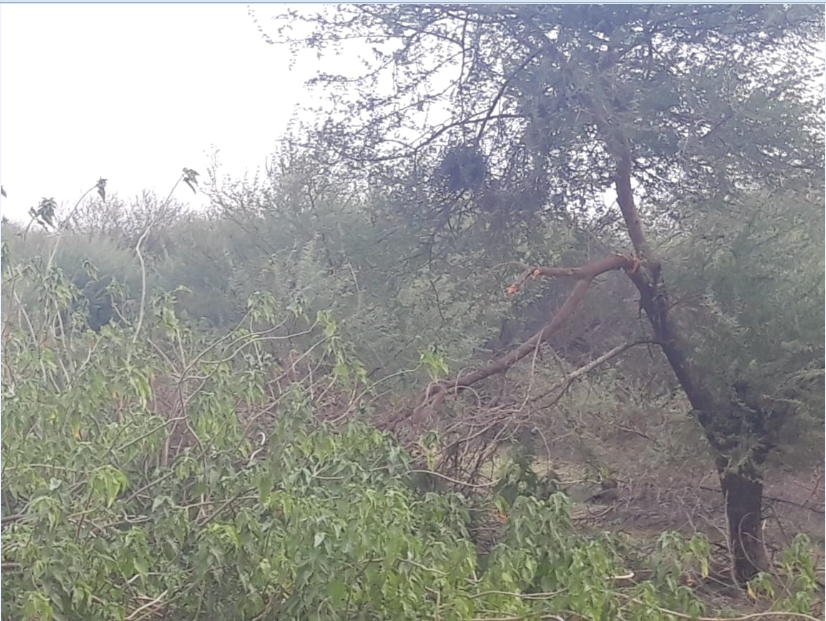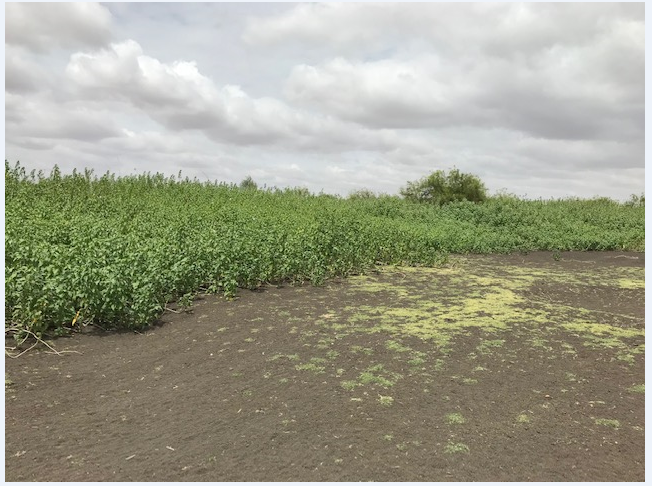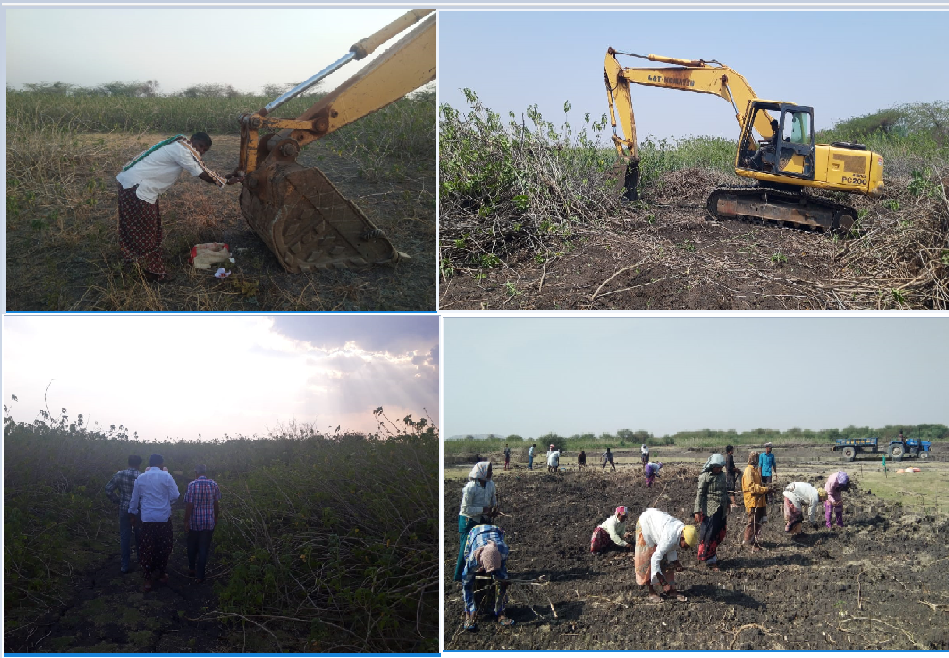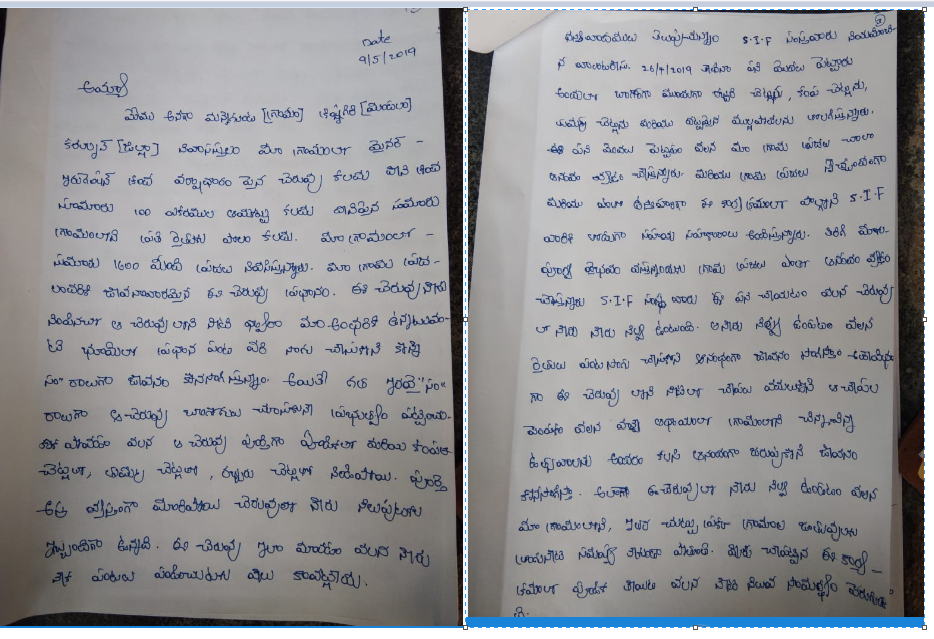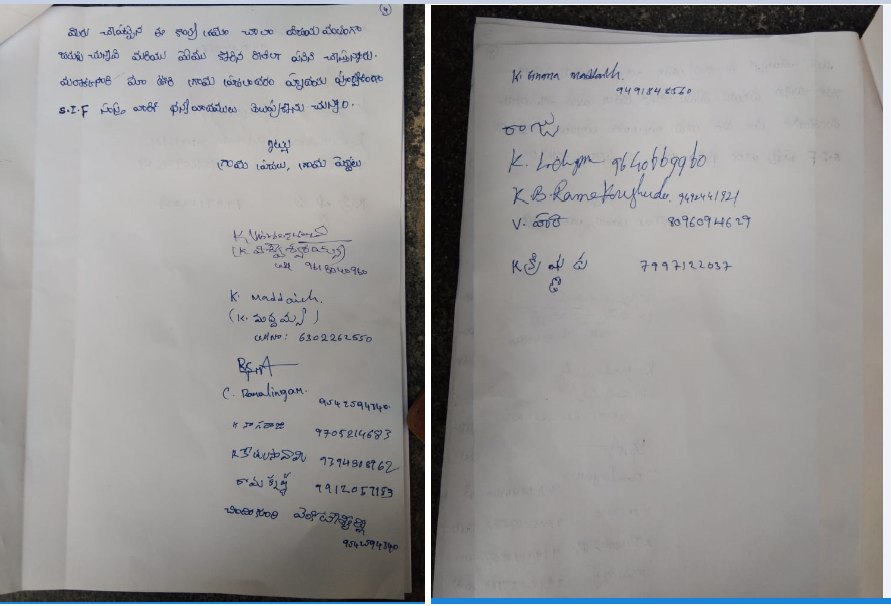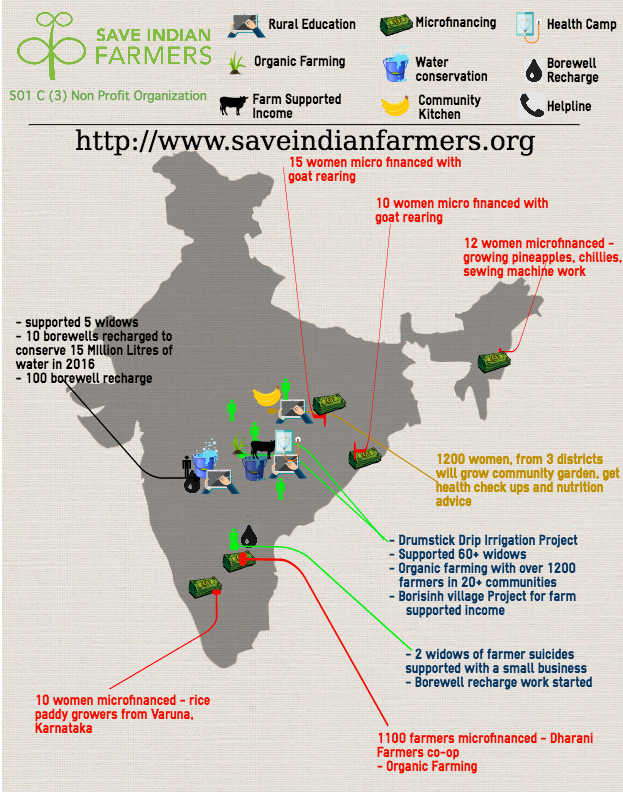May-June 2019
About the project
Mannekunta, a medium size village located in Krishnagiri Mandal of Kurnool district, Andhra Pradesh, falls in the perennially drought affected Rayalaseema region. Farmers in the village are completely dependents on rains for farming and drinking water.
It was brought to the attention of Save Indian Farmers that, the Reservoir in Mannekunta village was completely occupied by creeper plants and other types of trees, thus decreasing its water storage capacity significantly. Due to the lack of water in the reservoir, about 100 farmers were not able to grow their staple crops like paddy. Villagers also depended on this reservoir for drinking water for themselves and their livestock. The cleanup project was undertaken to alleviate these issue.
Save Indian farmers worked with the volunteers to collect the list of farmers and to get the estimates to cleanup the jungle and to de-silt the reservoir. SIF decided to do the project in multiple phases to complete the job. The goal was to increase water storage capacity so that the small farmer families benefit from the project.
About the village
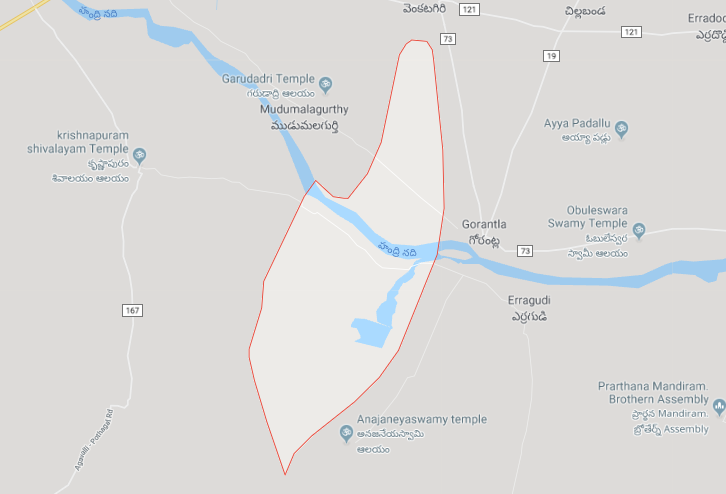
- Mannekunta is a medium size village located in Krishnagiri Mandal of Kurnool district, Andhra Pradesh and a home to 242 families
- The village has population of 1290 of which 652 are males while 638 are females as per Population Census 2011.
- The village has lower literacy rate compared to Andhra Pradesh. In 2011, literacy rate of Mannegunta village was 37.97 % compared to 67.02 % of Andhra Pradesh. Male literacy stands at 53.01 % while female literacy rate was 22.31 %.
- Mannekunta village has no bus connectivity. The nearest bus stop is 2 KM away from village. Villagers have to travel to Gorantla village for the bus.
- Villagers have to cross Handri river on foot as there is no bridge. Handri river is dry all the time except in peak rainy season, river flows if the dam releases the water.
Planning and feasibility
SIF received the request from villagers for the jungle clearance and de-silting in the reservoir. SIF got the data from the volunteers and collected the farmers name along with their family, land and income levels and sent volunteer Prabhakar Nagireddy to visit the village and reservoir.
Project estimation was prepared with the help of the Assistant Engineer of minor irrigation department. SIF volunteers discussed with the villagers and asked for their local participation with an agreement that SIF will provide JCB machine only and villagers have to contribute for the manual labor. The project cost was estimated about 13.5 lakh Indian rupees. SIF decided to undertake the project in phases.
Phase 1 – Scope, execution and challenges
The scope of the project in phase 1 was to clean up the jungle as much as possible in summer of 2019 as there would be no water in the reservoir at that time.
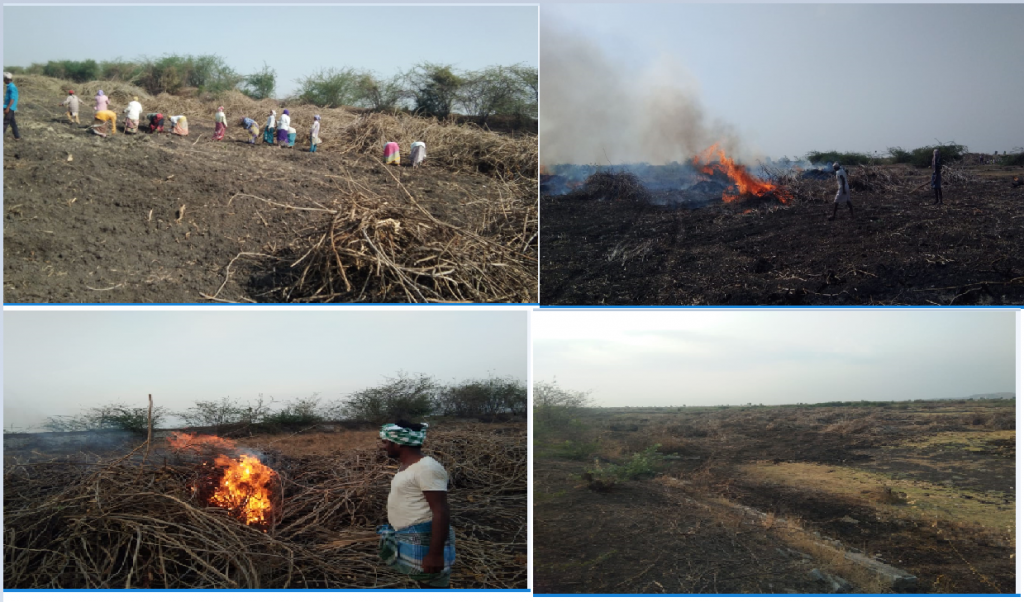
SIF identified the local organization and volunteers and started the work on April 25th 2019. Villagers formed a committee to identify the area of cleanup as first priority in phase 1 and also to identify the volunteers who would provide manual labor to work in cleaning up the reservoir. Village development committee provided the shelter and food to the SIF representatives and the machinery operators. Village committee volunteers shared the updates including pictures and video everyday via whatsapp messages. SIF volunteers Murali and Prabhakar were in touch with villagers daily to get the updates and to track the progress of the work.
Following were the major challenges faced during the execution
- Weather – as it was peak summer, the machine operator and the volunteers had to work in extreme temperatures. Since there was only one operator for the machine, he was unable to work more than 10 hours a day, thus limiting the amount of cleanup – we identified the issue in first 2 days and arranged 2 JCB operators to work in shifts.
- Machine issues – The machine broke down after working for 5 days and work had to be stopped for a day and a half – machines issues were subsequently fixed and work continued without break after that.
- Machine used to cover about 2 to 2.5 acres every day where the debris was less but covered only about 1.5 acres where there was heavy growth of creepers and other trees.
- Villagers expressed that 2 JCB machines would have helped speedup the work but the cost would have gone up significantly hence we did not go with adding another machine.
Phase 2
In Phase 1, about 38 Acres of jungle clearance was completed in 17 days with about 160 hours of machine work and numerous hours of villagers contribution through manual labor. There was still about 20 to 30 acres of jungle clearance to be done which was started after receiving the approvals from the SIF board. Additional funds were released for phase 2 wherein the machine and the villagers worked together for 11 days with 84 hours of machine work which helped clear about 20 more acres of the reservoir.
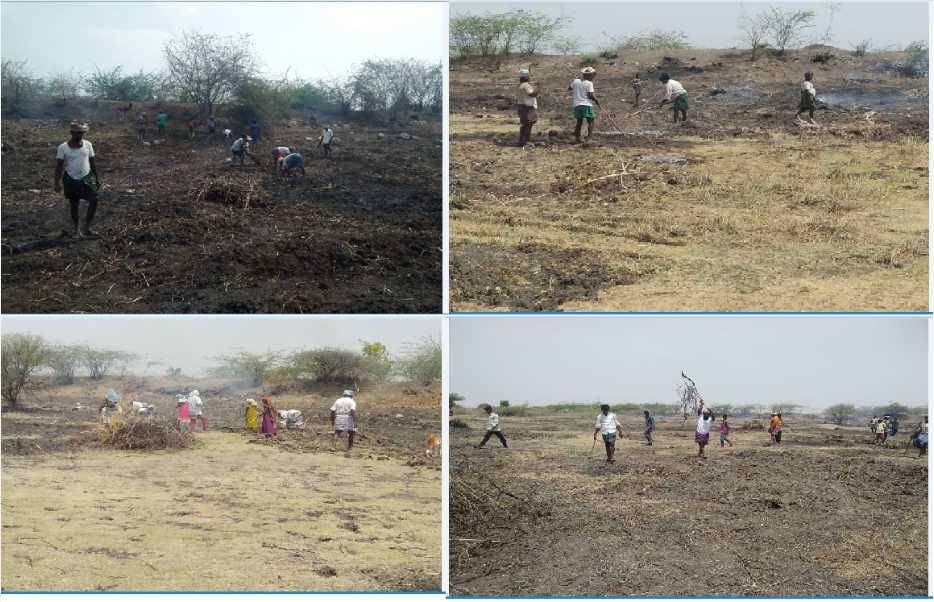
Current state of work
A total of about 58 acres of the reservoir was restored over the course of the summer. There is still about 10 acres of jungle which would require about 80 machine hours. Once the reservoir is fully restored, we will start to de-silt it next summer thus increasing its capacity even further.
Thank you note from villagers
Village committee wrote thank you note to SIF , they mentioned in the folllowing letter that there is 100 acres of land which is dependent on water from reservoir and no one including the government helped since last 20 years but with the help of SIF, the jungle clearance work is on going and it will help the farmers and the cattle too, the ground water level also will increase which will also help the village. Villagers are looking forward to continue the remaining work to complete the project with the help of SIF.
SIF’s project to cleanup Mannekunta Chruvu would help to retain more water and it is expected that it should increase water storage capacity by atleast 25% , next phase to de-silt and increase the height of the bund (bank) is equally important to increase the water storage capacity. According to rough estimate, the water storage capacity should have increased by 225,000 cubic meters, helping conserve about 225 million liters of water.
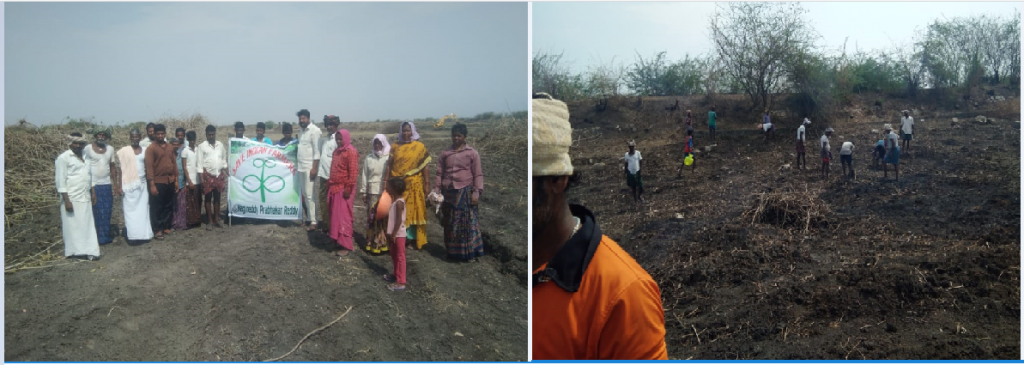
______________________________________________________________________________
About the author
Murali Kalluru is a native of Mannekunta In Kurnool, AP and is settled in Edison NJ and works as an IT professional. He joined SIF as a volunteer last year and was instrumental in highlighting the plight of farmers in his region and then managed this project along with Prabhakar

